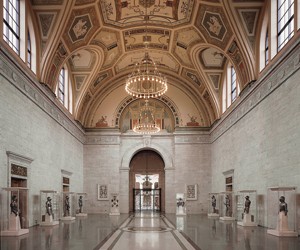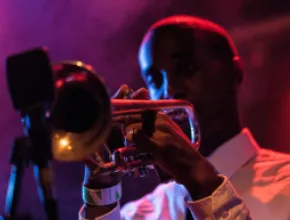When you come to Detroit, you come to a city that changed the world, according to Carla Conner-Penzabene, director of sales at the Detroit Metro CVB. Thanks to a recovering economy and new industries, the world is now returning the favor.
As the automotive industry grows stronger, the resources it developed in Detroit are being shared with new enterprises, such as technology and medicine. Mix these with historic attractions like the Henry Ford Museum and cultural touchstones like the Charles H. Wright Museum of African-American History, and planners have even more reason to gear up for the Motor City.
Although the last few years have been difficult for Detroit and the whole country, things are turning around. The recent Super Bowl Chrysler commercial with a voiceover by Clint Eastwood talked about this moment as the “halftime of America,” thrusting Detroit into a national discussion and shining a light on recent progress in the metro.
“The automotive industry is getting better and better every day, and that ad, that mantra, created a lot of curiosity about Detroit,” Conner-Penzabene says. “The spirit of buying American and buying local is helping our car companies, and we’re seeing more site inspections for meetings than ever.”
She also points out that it’s not just about buying American-made products, it’s using American ingenuity and transforming resources into progress. Many out-of-work automotive engineers discovered their skills were transferrable to the medical field, and 500 medical device companies have popped up in the region because of Detroit’s huge talent base and manufacturing capacity. As this fledging market grows, the city is seeing a rise in medical meetings as well, a trend Conner-Penzabene expects will continue.
One side effect of the auto upturn is a boom in technology. Today, cars can read your email to you and point you to your destination, among other high-tech features. Because of this, Detroit has seen more technology companies sprouting up in the city. Google and Twitter opened Detroit offices to serve as vendors for the rebounding automotive industry, and where they go, everyone else follows. Conner-Penzabene says that recently a tech company put out a call for 2,000 trained IT workers in the Detroit area, adding jobs to a massive base of IT talent.
Detroit also has a strong technological infrastructure in place because of the North American International Auto Show, which draws more than 6,000 journalists to the city. That much media coverage requires enormous amounts of bandwidth, and now the bandwidth has another use: social media conventions.
“We’re seeing conventions of bloggers and other social media professionals,” Conner-Penzabene says. “We’ve bid on two large conventions and three smaller ones within the last month. This is a whole new customer base for us.”
The social media convention is just one of the trends the Detroit Metro CVB has spotted. Another is the increase in booking windows. Just three years ago, planners were only booking a few weeks ahead, she says, but as the local and national economies improve, that window is slowly stretching back toward a pre-recession time frame.
Perhaps the most encouraging trend in the Detroit meetings market is social responsibility. The need to make a difference in a community has become a staple of convention business and is just as important as a networking reception or team-building activity. The range of social awareness varies, from groups meeting in Detroit as a way of helping the local economy recover to voluntourism, where attendees participate in a day of building houses with Habitat for Humanity or revitalizing communities within the metro with Blight Busters.
“As an outcome of the recession, we find that groups look actively at not just the economic benefit of a convention, but also a social benefit,” Conner-Penzabene says. “They’re asking, ‘Where will our dollars make the most difference?’”
Organizations are also frequently devoting themselves to a single cause during their meeting. Some may paint lockers at a school or help with equipment at a playground.
Social responsibility has become an essential part of meetings, and the Detroit Metro CVB has developed resources so attendees can fulfill those needs.
While planners make the town better by volunteering, the city itself continues to improve facilities as well.
The Cobo Center, Detroit’s 2.5 million-square-foot complex, is undergoing major renovations plus an expansion, and the empty Hotel Pontchartrain, adjacent to the center, has new owners and is slated to reopen in 2013 after renovations. A new Aloft property is scheduled for downtown as well.
Together the developments will add approximately 500 rooms to the city’s inventory.
Those properties will join other top picks like the 453-room Westin Book Cadillac Hotel, which recently underwent a renovation and offers 30,000 square feet of event space; the 1,300-room Detroit Marriott at the Renaissance Center and the GM Renaissance Center, with 35 meeting rooms and 100,000 square feet of event space; and the 400-room Greektown Casino Hotel, with 25,000 square feet of meeting space and a wealth of dining and entertainment options.
The automotive industry is the driving force behind many of Detroit’s draws, from the Henry Ford Museum complex to the metro’s cultural diversity. The Henry Ford facilities in Dearborn include numerous off-site options, from receptions in the museum itself to a breakfast and tour of the Ford Rouge Plant. Groups of up to 10,000 can rent the entire Greenfield Village, which includes working farms, historic homes, Ford’s workshop and the wonders of Thomas Edison’s Menlo Park in seven historic districts.
When Henry Ford announced in 1914 he would pay $5 a day to his workers, his words sparked a population boom that included people of every culture and background. The Arab-American National Museum documents the immigrant experience in fascinating detail. The museum offers 3,200 square feet of meeting space.
Also in Dearborn, the Charles H. Wright Museum of African-American History is the largest institution preserving African-American heritage and has several event spaces.
Meetings properties include The Henry, Autograph Collection by Marriott, the Hyatt Regency Dearborn and the Doubletree Hotel Detroit/Dearborn.
In the suburb of Novi, outdoor fun means finding the water. Boating, swimming and water skiing are popular activities at Cass Lake in West Bloomfield and Kent Lake in the Kensington Metropark. Macomb County offers 31 miles of shoreline along Lake St. Clair, a sailor’s dream with more than 100 marinas plus retail outlets like St. Clair Sail Boat Center. Several boat charters are available as well.
Novi is home to the Suburban Collection Showplace, featuring nearly 215,000 square feet of function space, and meetings hotels such as Baronette Renaissance and Sheraton Novi.
The suburban area of Oakland County includes the communities of Troy and Southfield, and visitors can go wild at the Detroit Zoo or go really wild cheering at a Detroit Pistons basketball game. Both venues can accommodate groups with tickets or events.
Meetings properties include the Detroit Marriott Troy and the Met Troy.
Located along the western edge of the Detroit Metro, Plymouth has a mix of art galleries and antique shops. The 1941 Penn Theatre, the town’s historic movie house, is available for group rental.
Roughly 40 miles west of Detroit is Ann Arbor, home to the University of Michigan, and nearby Ypsilanti, home to Eastern Michigan University. The vibrant region brims with arts and cultural options, unique dining offerings, historic attractions and interesting shops.
Main meetings properties include Ann Arbor Marriott Ypsilanti at Eagle Crest, with more than 27,000 square feet of meeting space and an 18-hole championship golf course; Sheraton Ann Arbor Hotel, which has 15,000 square feet of meeting space and is completing an $8.5 million renovation; and the landmark Dahlmann Campus Inn, featuring a convenient location next to the University of Michigan.
Ann Arbor’s many attractions double as unique off-site venues, including the University of Michigan Museum of Art, the Ann Arbor Art Center and the Michigan Theater.
Beth Bartlett is a frequent contributor to Meetings Focus MidAmerica.






